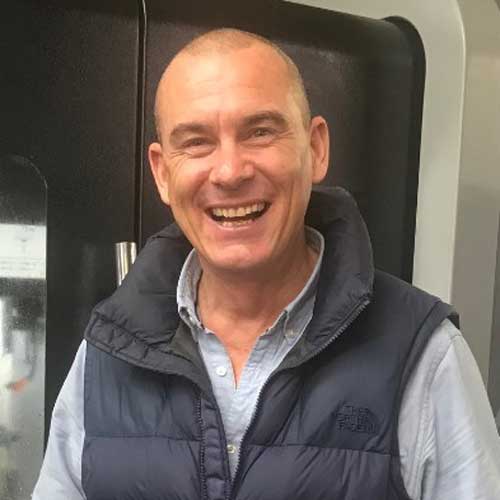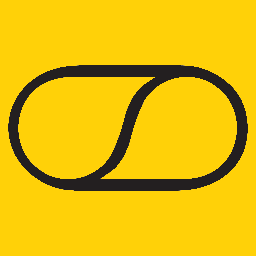Practical, real-world guidance for parts that mould cleanly, look good, and cost less.
When engineers talk about design for injection moulding, the conversation too often collapses into checklists: add draft, thin your ribs, watch the sink. Useful, yes—but checklists alone don’t tell you why the rules matter or how they trade off when you’re balancing stiffness, cosmetics, tolerance stack-ups, and unit cost. This chapter takes a more narrative route. We’ll walk the path a part follows—from intent, through geometry and materials, to tooling and scale—and we’ll show how Attwood PD connects rapid prototypes to low, mid, and high-volume production so the first shots are closer to "job done" than "start again."
1) Start with the end in mind: what the part must do, and how many you need
Every good moulded part begins with a plain-English statement of intent:
- What does this part have to survive? (loads, drops, temperature, chemicals, UV)
- How should it look and feel? (gloss, texture, flow lines allowed or forbidden)
- How will it be held and measured? (key datums, functional interfaces, assembly)
- How many do we need—now and later? (pilot runs, bridge builds, production volumes)
Those answers determine whether you can accept a simple two-plate tool or you’ll need slides and lifters; whether a low-cost aluminium bridge tool will do or hardened steel is justified; whether glass-filled nylon makes sense or the impact resistance of ABS/PC is worth the extra polish work.
Attwood PD approach: we begin each programme with a DFM brief that nails these points before anyone argues about a 0.5° vs 1° draft. It’s the document the CAD, resin, and tooling choices trace back to—so trade-offs later aren’t guesswork.
2) Geometry that cools like a team: wall thickness and transitions
Moulding is a choreography of molten polymer and cooling time. Thick areas cool slowly, thin areas quickly; the thicker zones shrink more and pull on their neighbours. That’s where sink marks, voids, and warpage come from.
Rather than memorising a table, think in principles:
- Uniformity beats bulk. Stiffness comes from section shape, not raw thickness. If a panel flexes, add ribs and gentle crowns instead of thickening the whole wall.
- Transition with kindness. When thickness must change, do it gradually with fillets and tapers so material doesn’t freeze off abruptly.
- Corners are suspects. Sharp inside corners trap heat and stress; generous radii keep the section more uniform and the polymer less angry.
A useful design exercise is to imagine you’re flowing water through the part: where would it slow, swirl, and cool unevenly? Those are the zones to lighten, rib, or re-route.
3) Draft: the cheapest insurance you can buy
Parts that eject reluctantly scuff, warp, or split inserts. Draft—a tiny taper in the direction of pull—solves this elegantly.
- On untextured faces, aim for a couple of degrees and only tighten where assembly demands it.
- On textured or spark-eroded faces, add more. Texture has “tooth”; more draft lets the part release without scraping the pattern away or gouging the surface.
- Add extra draft on shut-offs (where steel meets steel) and lifter faces, where wear and galling are most likely.
If you’re unsure, model the draft in early and challenge yourself to remove it only where a mating part or seal truly requires it. You will save both tool-steel and grey hairs.
4) Ribs, bosses, and corners: stiffness without the sink
Think of ribs as I-beams for plastic: they deepen the section and lift stiffness for little extra mass. Good ribs are slender (to fill cleanly), tall within reason (to avoid short shots), and blended at the base with smooth fillets so stress doesn’t concentrate.
Bosses—for screws or inserts—deserve the same care. A boss that’s too thick sits on a puddle of hot plastic; as it cools, a sink mark telegraphs to the show surface. Keep boss walls thinner than the surrounding wall, support them with gussets rather than raw mass, and separate neighbouring bosses so heat has somewhere to go.
Corners should read as flowing, constant-section shapes; when you round an inside corner, echo that radius on the outside so the material doesn’t balloon or neck.
The theme is consistent: design shapes that fill, pack, and cool at the same rhythm.
5) Gates, flow, and the parting line: where the story begins (and ends)
Where polymer enters the cavity (the gate) and where steel separates (the parting line) set the stage for everything from cosmetics to tolerances.
- Gates trade simplicity, cosmetics, and control. Edge and fan gates are wonderfully forgiving for long flow paths and thicker sections, but they leave a vestige at the edge. Submarine (tunnel) gates hide the vestige and auto-degate, but they bring higher shear and size limits. Hot-tip or valve gates give you compact tools and beautiful surfaces—at the price of complexity and budget.
- Parting lines are best chosen early, when you can still move a fillet or a cosmetic face to suit them. They influence ejection pin locations, where texture stops and starts, and whether you need side actions to release undercuts.
A practical design rhythm is gate → flow → knit lines → parting line. Sketch the likely flow fronts, predict where knit lines will meet, move them away from high stresses or show faces, then lock the split line. Your toolmaker—and your QA team—will thank you.
6) Tolerances and datums: hold tight only where it matters
Plastic is not metal. It moves with temperature, moisture (for nylons), fibre orientation, and process tuning. That doesn’t mean you can’t hold tight features—it means you should reserve tight tolerances for functional interfaces and let non-critical cosmetics breathe.
Anchor your drawing with a sensible datum scheme: one primary locating face, a secondary to control rotation, and a tertiary for completeness. Reference critical holes, slots, and planes to those datums using geometric tolerances that describe what you really care about (position, flatness, perpendicularity) rather than peppering ±0.05 mm all over the sheet.
And remember: a tolerance is a budget. If you spend all of it on cosmetic spans, you’ll have none left where bearings, seals, or latches need it.
7) Surface finish and texture: what the eye loves, the tool notices
Finish is where engineering and design hold hands. High polishes (the “mirror” finishes) reflect light beautifully but demand careful gating, venting, and ejection to avoid blush or drag. Matte stones and chemical textures hide minor flow lines and fingerprints and can add perceived quality—at the cost of more draft and, sometimes, cleaning challenges in the tool.
Two practical tips:
- Texture with intent. Use it to guide the eye and the hand; don’t wrap heavy textures across shut-offs or into corners where the pattern will struggle to reproduce.
- Mask the steel where it wears. Slides, lifter noses, and shut-off lands do better untextured; you’ll extend tool life and hold edges crisper.
8) Materials and shrinkage: let the polymer be itself
Polymers fall broadly into amorphous (ABS, PC, PS, PMMA) and semi-crystalline (PP, POM, PA, PBT). Amorphous grades typically mould with lower shrinkage and more isotropic behaviour—easier cosmetics, easier tolerance. Semi-crystalline grades are tougher, more chemically resistant, and love moving parts, but they shrink more and can warp if fibre orientation or cooling is uneven.
Fillers and reinforcements (glass, mineral) change the picture again: they stiffen parts and reduce shrinkage in the fibre direction while sometimes raising the risk of fibre print on show faces.
The design move isn’t to memorise numbers; it’s to model allowance. Leave space in housings for the part to “breathe,” add ribs in directions that counter the likely warpage, and talk to your moulder about gate size and pack/hold pressures that reduce differential shrink.
9) The cost levers you control in CAD
Toolmakers can do wonderful things, but some of the biggest cost drivers are set by your geometry:
- Avoid side actions when you can. Re-think undercuts as snaps, assemble-then-trap features, or revise the split line so the feature pulls naturally. Every slide is cost, cycle time, and maintenance.
- Keep walls uniform and skip gratuitous mass: shorter cycles, fewer sinks, better yield.
- Choose gate locations for packing, not just cosmetics. Thick-to-thin transitions fed from the thick side pack better and warp less.
- Right-size the finish. Polishing large areas to an optical finish is slow and expensive; reserve it for the lens, not the battery door.
- Think in families. If you must ship matching parts (left/right, front/back), a family tool can save non-recurring costs and ensure colour/texture uniformity—provided you accept a shared scrap risk.
These aren’t abstract rules; they’re the differences between a tool that starts producing revenue in weeks and a tool that needs remedial EDM before it pays for itself.
10) Prototype → bridge → production: de-risking scale with Attwood PD
A mature design for injection moulding plan embraces learning at the right fidelity:
- Rapid prototypes (days): SLA/SLS/MJF and CNC cut through ambiguity on form, fit, and ergonomics. You’ll learn where fingers land, which snaps need more lead-in, and how assemblies tolerate stack-ups.
- Bridge tooling (weeks): Aluminium or soft steel tools run the real resin, with the real gates, and the real ejection—but without the cost of a full production tool. We validate texture, dial in pack/hold, and run functional and environmental tests on parts that behave like the final article.
- Production tooling (months and beyond): Hardened steel, multi-cavity layouts, hot runners, auto-degating, and automation for consistent cycle times. Now you’re managing cavitation balance, wear plates, and preventive maintenance schedules—not determining where the parting line should be.
How Attwood PD leads: because we run plastics and metals, and we ship both prototypes and production, we keep your design intent intact as you scale. The gate location you proved on the bridge tool doesn’t mysteriously migrate on the family tool. The tolerance you held on ten parts is proven across ten thousand. And when change is justified, we own the conversation—and the CAD—so performance, cost, and lead time all move in the direction you want.
11) A short case vignette (how the trade-offs really feel)
A consumer IoT enclosure comes in with gorgeous industrial design: sweeping cosmetics, a waterproof seal groove, and four hidden bosses for screws. The first CAD had thick boss pads directly under the show face. Our DFM review flagged sink risk, slow cooling, and a gate-freeze problem.
We re-shaped the interior with thin, gusseted bosses, introduced ribs to return stiffness, and moved the gate to pack from the thick side of the seal land. Draft went up on the textured exterior; ejector pins moved to the battery bay. Bridge tooling proved the changes: sinks disappeared, cycle dropped by several seconds, and a ±0.1 mm seal compression band was held around the perimeter. The production tool kept the same gate and datum scheme, went to four cavities with a balanced hot runner, and the ramp to tens of thousands of units was uneventful—in the best possible way.
12) Pulling it together: a design routine you can trust
If you remember nothing else, try this six-step routine on your next part:
- Intent first. Write down function, cosmetics, datums, and volumes.
- Flow the shape. Draw where polymer should run, pack, and cool; trim geometry to help it.
- Place the gate, then the split. Don’t let the parting line pick you.
- Draft everything. Remove only where assembly makes it unavoidable.
- Rib instead of thicken. Support bosses with gussets, echo radii inside and out.
- Reserve tight tolerances for interfaces. Relax the rest and let texture work for you.
Do this, and you’ll spend more time validating final parts and less time chasing ghosts in steel.
Work with Attwood PD
If you’re aiming to design for injection moulding and you want fewer surprises between CAD and cartons, we’d love to help. Attwood PD offers:
- Collaborative DFM that starts with your design intent and ends with a toolable, testable model.
- Rapid prototypes in plastics and metals for fast learning loops.
- Bridge and production tooling—from single-cavity aluminium to multi-cavity hot-runner steel—plus overmoulding and insert moulding.
- Quality assurance aligned to your market, including FAI/PPAP and documentation that buyers and auditors respect.
Send the CAD and a brief. We’ll return a manufacturing plan, a risk-based options table (prototype vs bridge vs production), and a schedule that gets real parts in your hands quickly without painting you into a corner later.


